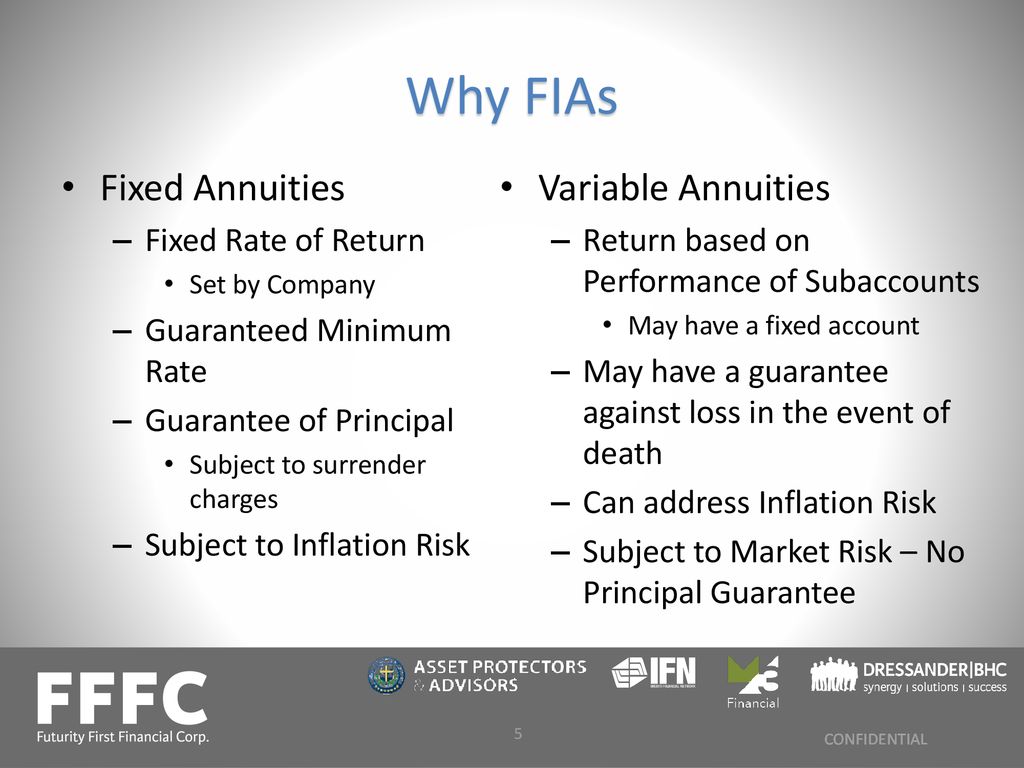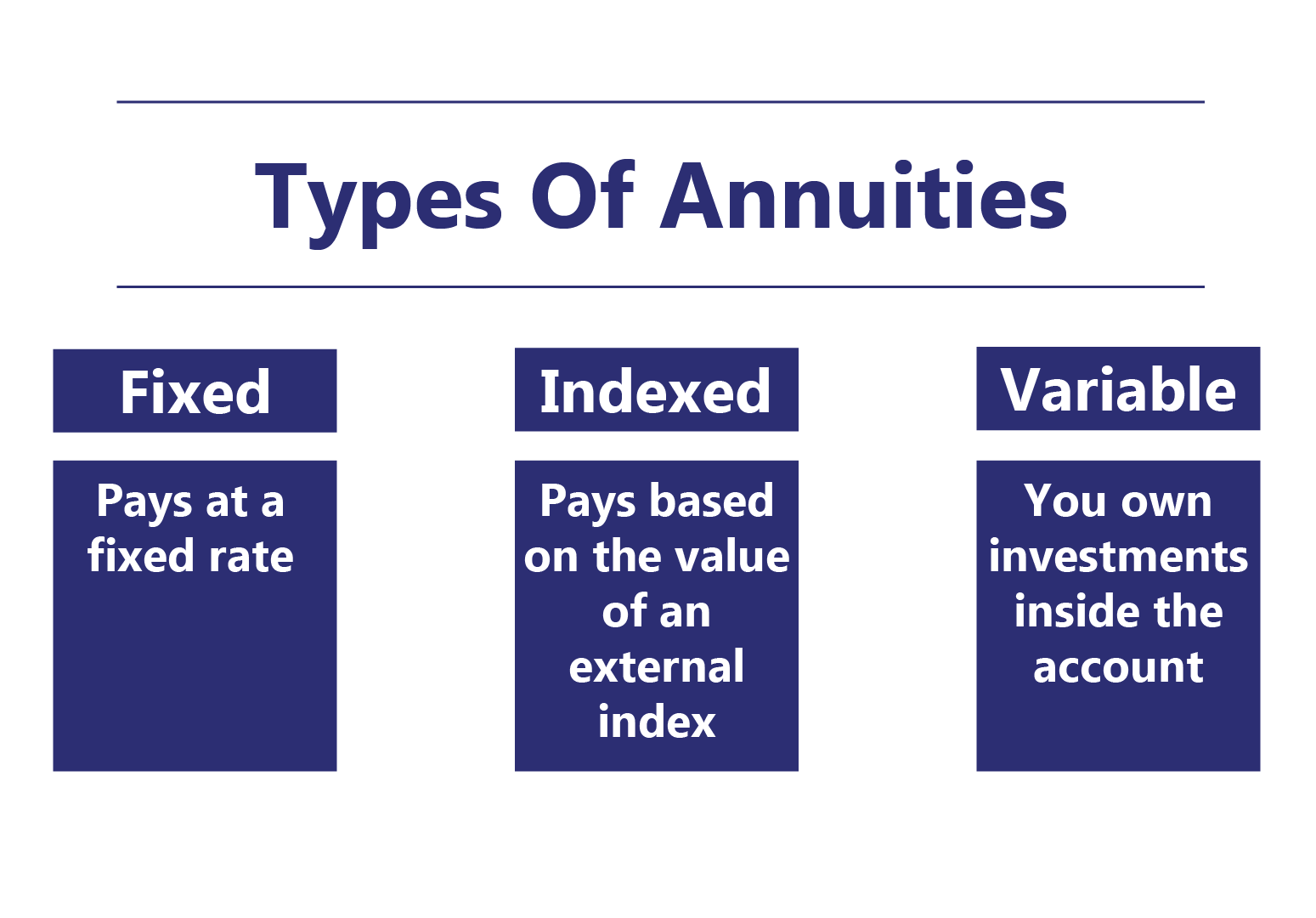All Categories
Featured
Table of Contents
Equally as with a repaired annuity, the proprietor of a variable annuity pays an insurer a round figure or collection of settlements in exchange for the guarantee of a collection of future payments in return. But as mentioned over, while a repaired annuity grows at an ensured, constant price, a variable annuity grows at a variable rate that depends upon the performance of the underlying investments, called sub-accounts.

During the accumulation stage, assets purchased variable annuity sub-accounts expand on a tax-deferred basis and are taxed just when the agreement proprietor takes out those incomes from the account. After the build-up phase comes the revenue phase. Gradually, variable annuity properties need to theoretically raise in value until the agreement proprietor decides he or she would love to begin taking out money from the account.
The most substantial problem that variable annuities usually present is high expense. Variable annuities have several layers of fees and expenses that can, in aggregate, develop a drag of up to 3-4% of the agreement's worth each year.
Breaking Down Tax Benefits Of Fixed Vs Variable Annuities Everything You Need to Know About Variable Annuities Vs Fixed Annuities Breaking Down the Basics of Investment Plans Benefits of Choosing the Right Financial Plan Why Annuities Fixed Vs Variable Is Worth Considering How to Compare Different Investment Plans: A Complete Overview Key Differences Between Different Financial Strategies Understanding the Key Features of Variable Vs Fixed Annuities Who Should Consider Fixed Annuity Or Variable Annuity? Tips for Choosing Immediate Fixed Annuity Vs Variable Annuity FAQs About Planning Your Financial Future Common Mistakes to Avoid When Planning Your Retirement Financial Planning Simplified: Understanding Your Options A Beginner’s Guide to Fixed Annuity Vs Variable Annuity A Closer Look at How to Build a Retirement Plan
M&E expense costs are determined as a percent of the agreement value Annuity companies hand down recordkeeping and various other management costs to the contract proprietor. This can be in the form of a level yearly cost or a percentage of the agreement worth. Administrative fees might be consisted of as part of the M&E risk charge or might be analyzed individually.
These costs can range from 0.1% for passive funds to 1.5% or even more for actively managed funds. Annuity contracts can be tailored in a variety of ways to serve the specific demands of the contract proprietor. Some typical variable annuity cyclists include guaranteed minimum accumulation benefit (GMAB), guaranteed minimum withdrawal benefit (GMWB), and ensured minimum income advantage (GMIB).

Variable annuity payments offer no such tax reduction. Variable annuities often tend to be highly inefficient vehicles for passing wealth to the following generation due to the fact that they do not take pleasure in a cost-basis adjustment when the initial agreement proprietor passes away. When the owner of a taxed investment account passes away, the expense bases of the financial investments held in the account are adjusted to mirror the market costs of those investments at the time of the proprietor's death.
Decoding How Investment Plans Work A Comprehensive Guide to Investment Choices Defining the Right Financial Strategy Advantages and Disadvantages of Different Retirement Plans Why Fixed Indexed Annuity Vs Market-variable Annuity Matters for Retirement Planning Annuities Variable Vs Fixed: Explained in Detail Key Differences Between Different Financial Strategies Understanding the Key Features of Long-Term Investments Who Should Consider Tax Benefits Of Fixed Vs Variable Annuities? Tips for Choosing the Best Investment Strategy FAQs About Planning Your Financial Future Common Mistakes to Avoid When Choosing a Financial Strategy Financial Planning Simplified: Understanding Your Options A Beginner’s Guide to Annuities Fixed Vs Variable A Closer Look at Fixed Vs Variable Annuities
Consequently, heirs can acquire a taxed financial investment portfolio with a "clean slate" from a tax perspective. Such is not the case with variable annuities. Investments held within a variable annuity do not receive a cost-basis adjustment when the original proprietor of the annuity dies. This means that any collected unrealized gains will certainly be handed down to the annuity proprietor's beneficiaries, together with the associated tax worry.
One considerable issue associated with variable annuities is the possibility for conflicts of rate of interest that may exist on the component of annuity salesmen. Unlike a monetary expert, that has a fiduciary task to make investment decisions that benefit the customer, an insurance policy broker has no such fiduciary commitment. Annuity sales are very profitable for the insurance coverage experts who market them due to high in advance sales payments.

Lots of variable annuity agreements include language which places a cap on the percentage of gain that can be experienced by certain sub-accounts. These caps protect against the annuity proprietor from completely taking part in a section of gains that could or else be enjoyed in years in which markets create substantial returns. From an outsider's perspective, presumably that investors are trading a cap on financial investment returns for the previously mentioned guaranteed flooring on investment returns.
As noted over, give up costs can seriously restrict an annuity owner's capacity to relocate assets out of an annuity in the very early years of the agreement. Even more, while a lot of variable annuities enable contract proprietors to take out a defined amount throughout the buildup phase, withdrawals beyond this quantity generally cause a company-imposed charge.
Withdrawals made from a set rate of interest investment choice could also experience a "market worth modification" or MVA. An MVA changes the value of the withdrawal to show any kind of modifications in rates of interest from the moment that the cash was purchased the fixed-rate choice to the moment that it was withdrawn.

Frequently, also the salespeople that sell them do not completely understand how they function, and so salespeople in some cases exploit a buyer's feelings to sell variable annuities instead of the benefits and viability of the items themselves. We believe that capitalists must completely recognize what they possess and just how much they are paying to own it.
Analyzing Variable Vs Fixed Annuity A Closer Look at Annuity Fixed Vs Variable What Is Fixed Index Annuity Vs Variable Annuities? Features of Smart Investment Choices Why Choosing Between Fixed Annuity And Variable Annuity Is a Smart Choice Choosing Between Fixed Annuity And Variable Annuity: Simplified Key Differences Between Fixed Vs Variable Annuity Pros Cons Understanding the Rewards of Retirement Income Fixed Vs Variable Annuity Who Should Consider Fixed Income Annuity Vs Variable Growth Annuity? Tips for Choosing the Best Investment Strategy FAQs About Fixed Vs Variable Annuity Pros And Cons Common Mistakes to Avoid When Choosing a Financial Strategy Financial Planning Simplified: Understanding Variable Annuities Vs Fixed Annuities A Beginner’s Guide to Fixed Index Annuity Vs Variable Annuities A Closer Look at How to Build a Retirement Plan
The same can not be stated for variable annuity possessions held in fixed-rate investments. These properties legally come from the insurance policy business and would consequently be at danger if the company were to fall short. Similarly, any guarantees that the insurance policy company has actually concurred to supply, such as an ensured minimal earnings advantage, would remain in inquiry in case of a service failing.
Possible purchasers of variable annuities must comprehend and take into consideration the monetary problem of the issuing insurance firm prior to getting in into an annuity contract. While the advantages and disadvantages of various kinds of annuities can be discussed, the actual concern bordering annuities is that of suitability.
As the stating goes: "Buyer beware!" This post is prepared by Pekin Hardy Strauss, Inc. Variable annuity growth potential. ("Pekin Hardy," dba Pekin Hardy Strauss Wealth Monitoring) for informational purposes just and is not meant as a deal or solicitation for service. The info and data in this write-up does not comprise legal, tax, bookkeeping, investment, or various other specialist advice
Table of Contents
Latest Posts
Breaking Down Your Investment Choices A Closer Look at Variable Vs Fixed Annuity Breaking Down the Basics of Fixed Annuity Vs Variable Annuity Features of Fixed Annuity Vs Variable Annuity Why Choosin
Decoding How Investment Plans Work Everything You Need to Know About Financial Strategies Defining the Right Financial Strategy Benefits of Choosing Between Fixed Annuity And Variable Annuity Why Fixe
Understanding Financial Strategies Key Insights on Deferred Annuity Vs Variable Annuity Defining the Right Financial Strategy Pros and Cons of Various Financial Options Why Deferred Annuity Vs Variabl
More
Latest Posts